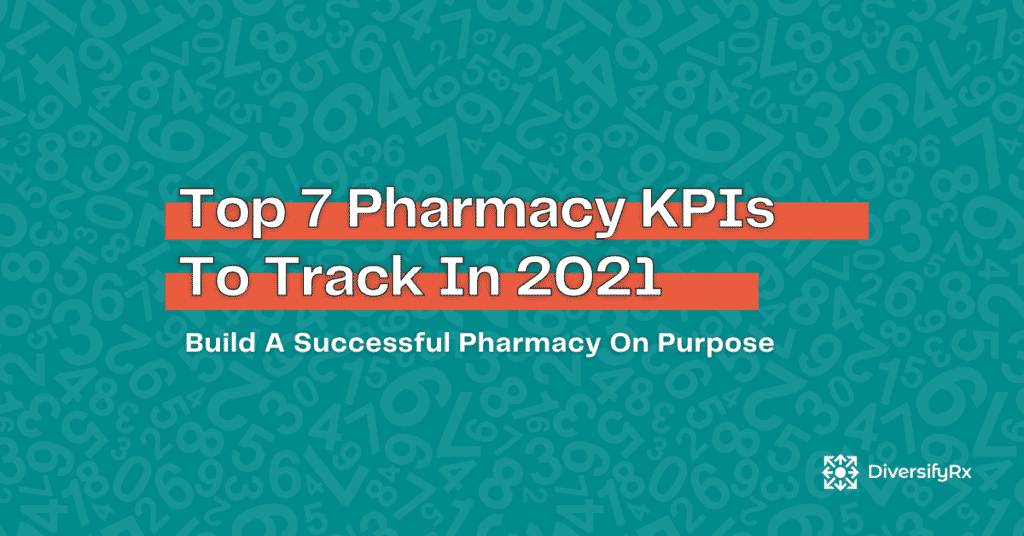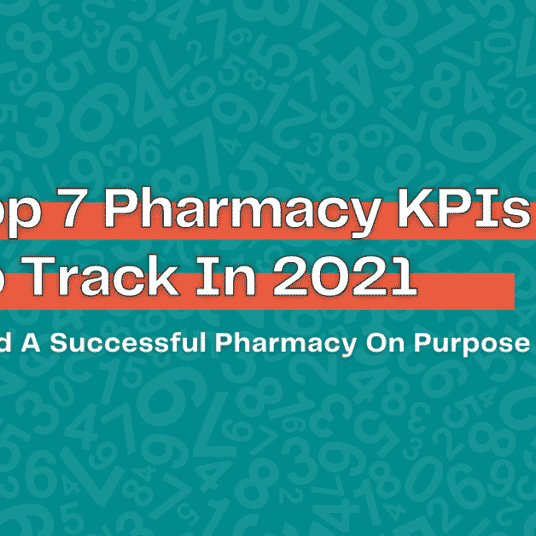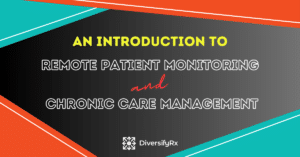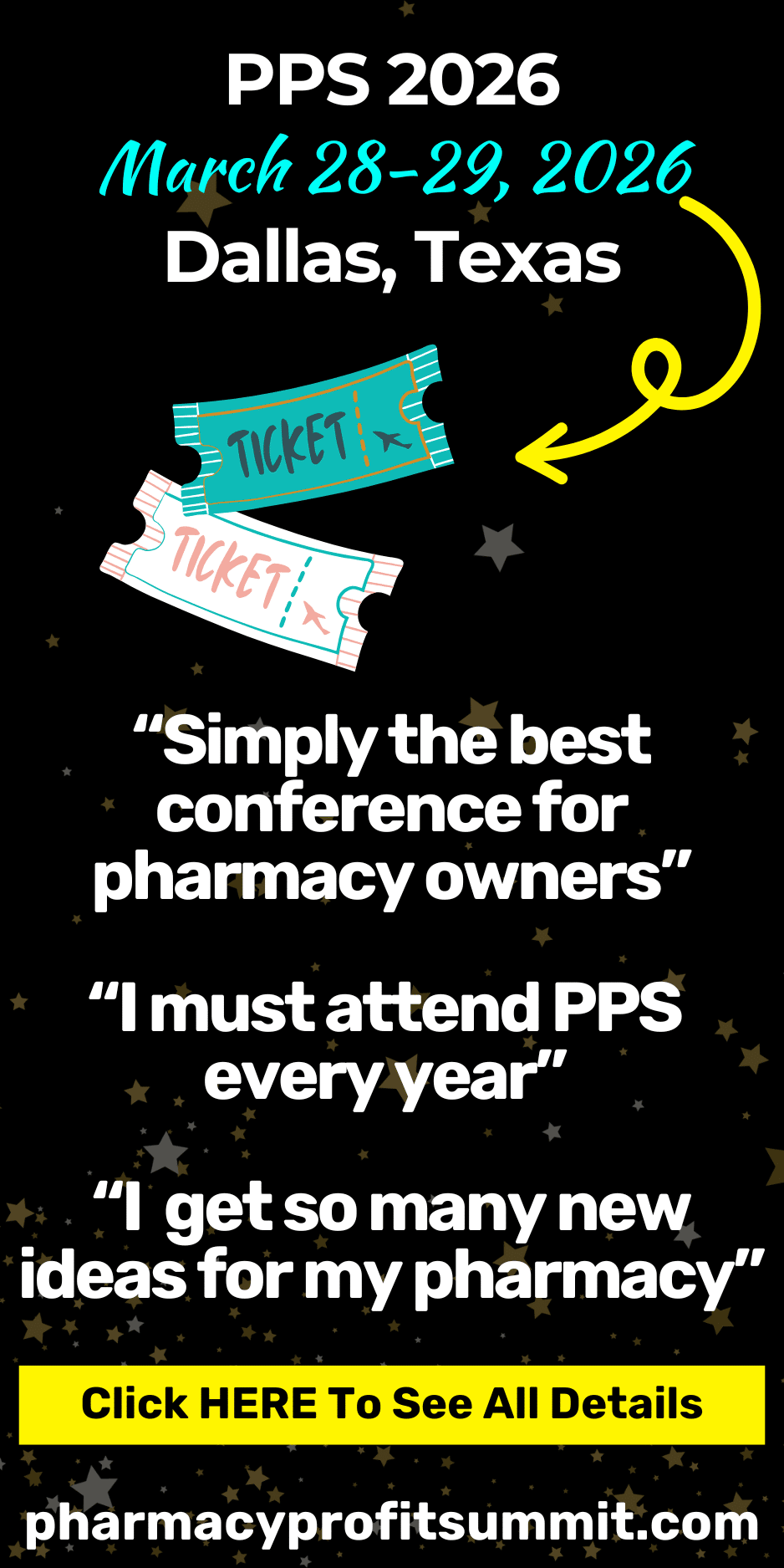Pharmacy KPIs, Metrics, and Data Oh My! So much information to track and so little time.
It’s January. A time when we set goals, invent our dreams and imagine what the year could bring us. How can you make sure you reach your goals? What is the best way to not fall victim to the plague of abandoning your plans by February first? My answer is consistent tracking, reporting, and not trying to do it all yourself.
As a pharmacy owner, the amount of data and information at your fingertips is mind-numbing. You can’t focus on it all. There just isn’t enough time in the day or gas in your tank. Let’s break it down and go through the details on the most impactful key performance indicators (KPIs) for an independent retail pharmacy. Ready? Let’s go.
The List
I am a confessed data nerd; therefore, I have a list of almost 100 KPIs for independent pharmacy owners. You can track everything. These 7 KPIs are the ones that I think every independent pharmacy owner should be monitoring:
- Expense Ratio
- Payroll Ratio
- Inventory Turns
- PBM Revenue Ratio
- Monthly New Patients
- Number of Days of Cash On Hand
- Net Profit Dollars & Percentage
Access the KPI Worksheet Here
To get an instant copy of the KPI worksheet, please fill out the form.
A new window will open after you hit the button.
Please watch for any pop-up blocker notifications in your browser.
Expense Ratio
Goal: Less than 19%
To calculate this number, you need to take the total dollar amount of expenses divided by the total dollar amount of revenues. Then multiply by 100 to get a percentage.
If this number is too high, cash flow worries are probably keeping you up at night. For many pharmacies, this is a top 3 problem. Revenues have dropped, but expenses haven’t. Make sure to get a detailed profit and loss statement (P&L) from your accountant every month so you can see every line item and make sure each expense is necessary and as low as possible.
Tip: Save on ink and toner by getting a custom quote and purchasing through PSA.
Payroll Ratio
Goal: Less than 13%
To calculate this number, take all of your payroll expenses (pay, taxes, insurance) for all employees and divide this number by your total revenue dollars. Multiply by 100 to get your percentage.
The most often question I get asked is, Do I include my pay as the owner? The answer is maybe. If you are still working the bench and doing vital tasks for the pharmacy’s revenue generation, then yes. If you are the visionary and face of your business while not performing critical work, then no.
The second most frequent question is, What if I don’t pay myself? If you don’t pay yourself, yet you perform critical work for your pharmacy, then the suggestion is to add in the market rate for yourself. This add-back will give you a more accurate picture of your payroll ratio. What you don’t want to do is NOT add your market value rate and only include techs/clerks, and then your payroll ratio is low, and you think you are ok.
Tip: You don’t always have to fire someone (though you may need to). Instead, you can make small cuts to all employees across the board or give your employees a directive to work on ideas and programs that will increase your revenues.
Inventory Turns
Goal: Great than 20
Your accountant should be calculating this number for you each month. If you are your accountant, this is how you will do it. Start with your COGS amount for the past month, then multiply by 12. Or you can start with an annualized COGS amount. Take this first number and divide it by the current value of your inventory. The resulting number will be your inventory turns.
It is a bit complicated. Don’t be frightened. Once you get the hang of it and truly understand this number’s concept, it will be easy peasy. Ask for help. Message DiversifyRx, call your accountant, or phone a friend. A fat inventory equals a skinny wallet. If you are having cash flow issues, I bet your inventory is too high for your revenue level.
You might be saying 20 turns… that sounds higher than other numbers I have heard over the years. Yep, you are right. Two decades ago, 12 turns meant you were a rockstar. Declining profits and tight cash flow necessitate the need for a higher number of turns. 20 is the minimum to aim for these days. The best performing pharmacies are in the high 20s and even 30s.
Tip: Conduct an inventory clean up every quarter to maximize allowable returns to your primary wholesaler. With next day shipping from 99% of wholesalers, there is no need to carry a large, expensive inventory.
PBM Revenue Ratio
Goal: Less than 85%
To figure out this ratio, you will take all your revenues from PBMs (including patient copays) and divide that number by your total pharmacy revenues from all areas. Once you multiply by 100, you will have your percentage.
Most pharmacies are in the high 90s. That is just the nature of the beast. However, for pharmacies that have focused on diversifying their revenue streams, such as unique OTC lines or clinical-based revenue, they can see this number drop to the 50s and 60s. If you want to break away from the tyranny of PBMs, this is your number to track.
Tip: Here are some ideas for alternative revenue streams: RPM, Worker’s Compensation, Weight Loss Coaching, PGx.
Monthly New Patients
Goal: Varies; often, higher is better.
To monitor this number, you will need to run a report from your pharmacy management software (PMS). Many have this report pre-built in. If you are not sure, just send a message to your support team, and they should be able to tell you the steps.
The goal for new patients isn’t always higher is better. You can grow yourself out of business because of the high amount of accounts receivable (AR) in pharmacy. Adding too many new patients can lead to a severe cash flow crunch. However, if you aren’t growing, you are shrinking. Every pharmacy has a normal attrition of patients. You need to be adding about 1% of your total patients each month just to maintain your pharmacy. If you are looking to grow, then set your goals higher.
Tip: Use a program such as RPM services to drive new patients to your pharmacy.
Number of Days of Cash on Hand
Goal: Greater than 15
Your bookkeeper or accountant should be giving you this number monthly as well. It is a multi-step calculation. First, you need to calculate your average daily expense rate. Take your expenses for the month and divide by the number of days in the month (or you can use a standard 30 days). The second step is to take your cash balance (the amount of readily available cash in your bank) and divide it by your daily expense rate. The resulting number will tell you how many days of expenses you can pay with your current amount of cash. What this number helps you to understand is how your cash flow is doing.
Some pharmacies worry about keeping too much cash in their bank accounts. By knowing this number and understanding your daily expense rate, you can safely move some money around without risking a negative cash balance. One caveat to this rule is your primary wholesaler bill. This bill is typically your most enormous bill. You will need to remember what day this gets withdrawn from your account to make sure you have enough in the bank.
Tip: Maximize your cash flow with these 14 strategies.
Net Profit Dollars and Percentage
Goal: Higher is definitely better, 4% minimum
Net profit dollars is your bottom line. You can find it on your monthly P&L. The bottom line is at the very end (bottom) of your P&L. Most accountants show this financial statement in the form of dollars. Dollars are the most important because you can’t pay bills with percentages. However, dollars don’t tell you how effective you are in generating net profit.
To calculate your net profit percentage, you take your net profit dollars and divide them by your total revenue dollars. Multiplying by 100 will give you your net profit percentage. Ideally, you will see a minimum amount of 4%. This ratio means that for every $1 million in revenue, you will have $40,000 in net profit.
Tip: Net profit is a math game. You can increase your revenues, decrease your expenses (or do both), and then you will get more net profit. Look at adding higher profit products and services to your repertoire.
Tracking, measuring, monitoring, and reporting your pharmacy’s metrics is the single best habit you can develop to improve your pharmacy. By paying attention to the numbers, you will be able to make smarter, more informed decisions. All of the numbers can seem overwhelming, even with just 7 KPIs. To help you out, I put together a simple KPI excel sheet for these specific KPIs. Complete the form below to get an instant copy. If you ever want a copy of my behemoth sheet with a ton of KPIs, just ask!
Start 2021 off strong by having a game plan. A fact-based, number-backed strategy that will ensure your success all year long.
Join the DiversifyRx Facebook group and keep updated on strategies, opportunities, and KPIs all year long.
Access the KPI Worksheet Here
To get an instant copy of the KPI worksheet, please fill out the form.
A new window will open after you hit the button.
Please watch for any pop-up blocker notifications in your browser.

















